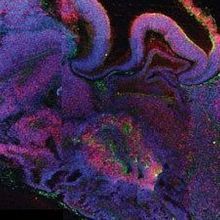Login
SubscribeModel systems

Exploring Preclinical Models for Inflammatory Bowel Disease
The Scientist’s Creative Services Team and Altis BioSystems | Sep 15, 2023 | 4 min read
Learn how epithelial monolayer models help researchers discover effective therapies and biomarkers for inflammatory bowel diseases.

Turning Organoids Inside Out
The Scientist’s Creative Services Team, MilliporeSigma, and Hub Organoids | Aug 15, 2023 | 4 min read
Discover how a new procedure reverses the polarity of typical basolateral-out organoids to form versatile apical-out organoids.

“Lemon Frost” Leopard Geckos’ Cancers Similar to Human Melanomas
Christie Wilcox, PhD | Jun 24, 2021 | 6 min read
The color morph’s bright yellow hue and its propensity for skin tumors both likely stem from a gene implicated in a dangerous form of human skin cancer, suggesting the animals could make an ideal model for studying the disease.

The Many Model Systems of COVID-19
Abby Olena, PhD | Nov 4, 2020 | 7 min read
Researchers turn to familiar model animals, along with some fresh strategies, to develop countermeasures against SARS-CoV-2 and investigate the biology of infection.

Image of the Day: Remodeled
Sukanya Charuchandra | Jun 25, 2018 | 1 min read
Researchers use CRISPR-Cas9 to create transgenic Hydractinia symbiolongicarpus, a cnidarian, for the first time.

More Mini Brains
Jef Akst | Feb 17, 2016 | 1 min read
Simple versions of brain organoids could serve as new models for testing the effects of drugs, researchers reported at this year’s AAAS meeting.

Lab-Grown Model Brains
Ed Yong | Aug 28, 2013 | 4 min read
Three-dimensional tissues called “cerebral organoids” can model the earliest stages of brain development.

Contributors
Beth Marie Mole | Mar 1, 2013 | 3 min read
Meet some of the people featured in the March 2013 issue of The Scientist.
